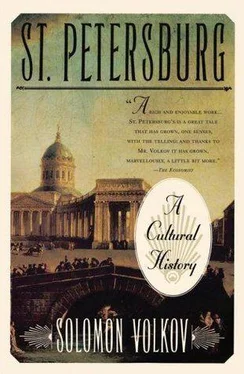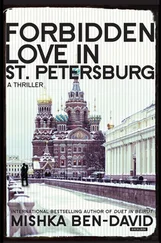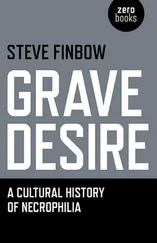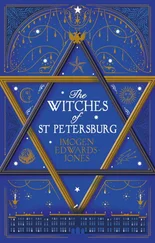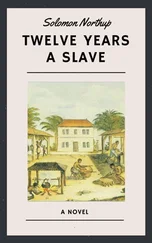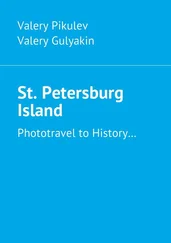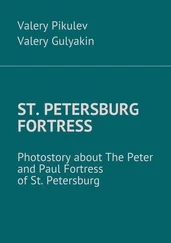Despite the opinion of many later historians Peter loved Russia, its talented people, its colorful language, the country’s rituals and its food, particularly shchi (cabbage soup). But he hated Russian filth, indolence, thievery, and the fat, bearded boyars in their heavy clothes. He hated Moscow, too, the ancient Russian capital where he was almost murdered, and its rebellious soldiers, whom he constantly suspected of conspiracies against him.
So Peter started with a vengeance to change Russia’s traditions and symbols. He ordered the boyars’ beards to be cut (and at the same time the beards of the rest of the population, save the clergy and the peasants) and forced them to dance minuets at the Parisian-style “assemblies” he instituted. He gave his army a new uniform (and, of course, new weaponry) of the Western type, a new banner, and new orders, and he modernized the Russian alphabet. All these mostly symbolic transformations signaled in no uncertain terms the coming of the new age for Russia.
But the greatest expression of Peter’s sovereign willfulness, his Russian maximalism, and his addiction to the supersymbolic gesture was, ultimately, the founding of St. Petersburg. Retrospectively, this feat became loaded with a multitude of interpretations and explanations; but the idea of establishing a new city just then and on just that spot seemed in fact to be no more or less than the act of an incredibly rich, reckless, and sometimes lucky gambler risking it all in one supreme wager. Peter wanted to astonish Russia and the entire civilized world, and he succeeded.
In fact, this seemingly crazy idea had developed gradually. The first impulse toward a concept of a city that would be completely novel, even avant-garde, for Russia came to young Peter back in Moscow. There he would sneak off into the foreign settlement, where German, Dutch, Scots, and French craftsmen, merchants, and mercenary soldiers lived, to enjoy their company and friendship.
A clearer image of his ideal city, one that had nothing in common with the muddy, dangerous Moscow, where Peter’s enemies could hide in the crooked streets, formed during the young tsar’s trips to Europe, particularly to Holland. First Peter started to fantasize about a place like Amsterdam: clean, neat, easily observable and therefore controllable, on the water, with rows of trees reflected in the city’s canals. Then Peter’s vision grew much grander: His city would soar like an eagle: it would be a fortress, a port, an enormous wharf, a model for all Russia, and at the same time a shopwindow on the West.
Yes, a shopwindow, and not an ordinary one. The comparison of Petersburg with a window into Europe belongs not to Peter but the Italian traveler Count Francesco Algarotti, who used it in his Lettera sulla Russia in 1739. Peter would not have come up with this metaphor, if only because his attitude toward the West, like everything else with him, was ambivalent. Peter often repeated, “We need Europe for a few decades, and then we must show it our ass.” The proud autocrat probably would have preferred the way Pushkin put it a hundred years later: “Russia entered Europe like a launched battleship—accompanied by the hammering of axes and the thunder of cannons.” This desire to speak with Europe on equal terms, even if accompanied by cannon fire, is also very typical for subsequent generations of Russian writers, including the more Western-oriented like Nikolai Gumilyov.
A great Russian historian, Vassily Klyuchevsky, always insisted that “moving toward Europe was only a means toward an end in Peter’s eyes and not the end itself.” {13} 13 6 Klyuchevsky, Sochineniia (Works), vol. 4, p. 196.
He pointed out that the goal of Peter’s legendary trips to western Europe was always to steal the latest know-how and to lure highly qualified European specialists to Russia. All that helps explain why, once he wrested access to the Baltic Sea from the Swedes, Peter did not use the important centers already established there—like Riga, Libava (Liepājā), or Revel (Tallinn)—as a base, even though their locations, not to mention their climate, were much more conducive for regular contacts with the West.
Peter wanted a clean break with the past, but he wanted to make that break on his own terms. He didn’t need a test site already “spoiled” by existing ties with western Europe. Only the island in the mouth of the Neva seemed like a suitable laboratory for the tsar’s grand experiment.
The first house in Petersburg—for Peter himself, two rooms and a storeroom that doubled as bedroom—was built of fir logs by the tsar with the help of soldiers in three days, in May 1703. Its walls were painted to resemble brick, the better to remind Peter of his beloved Amsterdam. The city plan was small-scale at first. But since with every day the tsar’s appetite increased, the plan became more elaborate. The Amsterdam model was soon abandoned. Peter was now going after no less than a northern Paris or Rome. Instead of naturally developing on high ground, Petersburg was begun on lowland, below sea level—a risky and fateful decision, resulting in much danger for its future inhabitants. The tsar plotted the city with ruler in hand as a system of islands, canals, and broad, straight pershpektivy (prospects, from the Latin pro-specto, to look into the distance), so that it would present a clear geometrical pattern. The main pershpektiva, the nearly three-mile-long Nevsky Prospect, was built in 1715.
To realize all these constantly changing plans, tens of thousands of workers from all over the country were herded to the Neva delta. It was a motley crew—peasants, soldiers, convicts, captured Swedes and Tatars. There was no housing, no food, no tools for them; they transported excavated dirt in their clothing. Drenched by pouring rains, attacked by swarms of mosquitoes, the wretches pounded wooden pilings into the swampy ground. How many died of starvation, disease, and exhaustion? Probably hundreds of thousands. Peter did not care, so no one kept track.
Later, the official court historian, Nikolai Karamzin, would sigh, “Les grands hommes ne voyent que le tout,” explaining, “Petersburg is founded on tears and corpses.” The severe Klyuchevsky seconds this conclusion: “I doubt one could find a battle in military history that led to the death of more soldiers than the number of laborers who died in Petersburg…. Peter called his new capital his ‘paradise’; but it turned into a big cemetery for the people.” {14} 14 7 Ibid., p. 115.
Not only the humble builders of Petersburg were terrorized by Peter. The celebrated French architect Alexandre Jean-Baptiste LeBlond, who designed the general plan for the city’s construction, was, according to a historian, “beaten by the tsar and soon after died.” Other foreigners who worked on “the New Rome”—Italians, Germans, Dutch—feared Peter as they had never feared their own rulers. “Everything trembled, everything submitted wordlessly,” commented Pushkin.
Peter’s muzzled and stunned subjects were showered with dozens of harshly worded ukases calling for more speed and more order in erecting the tsar’s ideal city: decrees on more recruits; decrees on the highly regulated model houses for “noble,” “wealthy,” and “common” people; decrees ordering all Russian stonemasons to Petersburg and banning the construction of stone buildings in all other cities of the country; decrees on the obligatory delivery of stones by ship and land for paving the streets of his “paradise,” with the exact number of stones necessary (there were enormous fines for each undelivered stone) [1] A typical ukase intended to protect the wooden streets of Petersburg and signed by Peter read, “from this time on all clamps and nails used on men’s and women’s shoes may no longer be sold and no one may have any; just as no one, no matter his rank, may wear shoes or boots shod this way; and if someone does have shoes or boots shod this way, he will be fined harshly, and the merchants who keep such clamps and nails will be sent to hard labor and their property confiscated.”
.
Читать дальше
